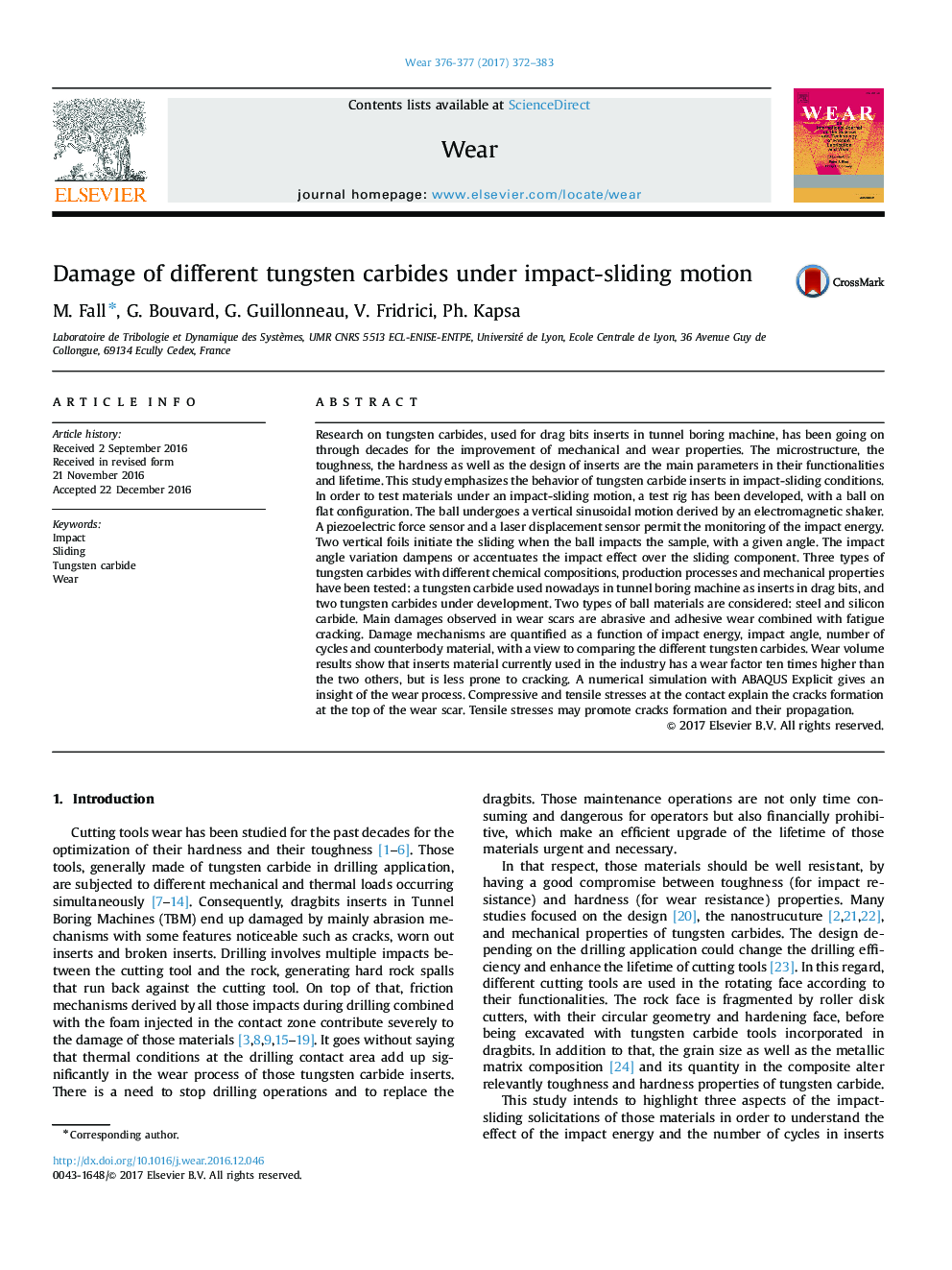| کد مقاله | کد نشریه | سال انتشار | مقاله انگلیسی | نسخه تمام متن |
|---|---|---|---|---|
| 4986705 | 1454953 | 2017 | 12 صفحه PDF | دانلود رایگان |
عنوان انگلیسی مقاله ISI
Damage of different tungsten carbides under impact-sliding motion
ترجمه فارسی عنوان
آسیب کاربید های مختلف تنگستن تحت حرکت کششی ضربه
دانلود مقاله + سفارش ترجمه
دانلود مقاله ISI انگلیسی
رایگان برای ایرانیان
کلمات کلیدی
ضربه، کشویی کاربید تنگستن، پوشیدن،
موضوعات مرتبط
مهندسی و علوم پایه
مهندسی شیمی
شیمی کلوئیدی و سطحی
چکیده انگلیسی
Research on tungsten carbides, used for drag bits inserts in tunnel boring machine, has been going on through decades for the improvement of mechanical and wear properties. The microstructure, the toughness, the hardness as well as the design of inserts are the main parameters in their functionalities and lifetime. This study emphasizes the behavior of tungsten carbide inserts in impact-sliding conditions. In order to test materials under an impact-sliding motion, a test rig has been developed, with a ball on flat configuration. The ball undergoes a vertical sinusoidal motion derived by an electromagnetic shaker. A piezoelectric force sensor and a laser displacement sensor permit the monitoring of the impact energy. Two vertical foils initiate the sliding when the ball impacts the sample, with a given angle. The impact angle variation dampens or accentuates the impact effect over the sliding component. Three types of tungsten carbides with different chemical compositions, production processes and mechanical properties have been tested: a tungsten carbide used nowadays in tunnel boring machine as inserts in drag bits, and two tungsten carbides under development. Two types of ball materials are considered: steel and silicon carbide. Main damages observed in wear scars are abrasive and adhesive wear combined with fatigue cracking. Damage mechanisms are quantified as a function of impact energy, impact angle, number of cycles and counterbody material, with a view to comparing the different tungsten carbides. Wear volume results show that inserts material currently used in the industry has a wear factor ten times higher than the two others, but is less prone to cracking. A numerical simulation with ABAQUS Explicit gives an insight of the wear process. Compressive and tensile stresses at the contact explain the cracks formation at the top of the wear scar. Tensile stresses may promote cracks formation and their propagation.
ناشر
Database: Elsevier - ScienceDirect (ساینس دایرکت)
Journal: Wear - Volumes 376â377, Part A, 15 April 2017, Pages 372-383
Journal: Wear - Volumes 376â377, Part A, 15 April 2017, Pages 372-383
نویسندگان
M. Fall, G. Bouvard, G. Guillonneau, V. Fridrici, Ph. Kapsa,
